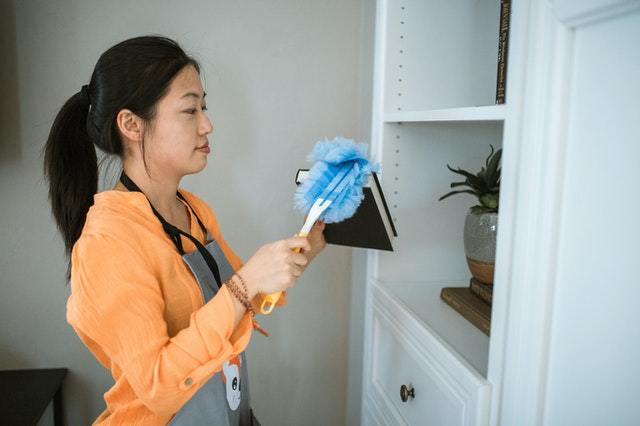Used book sellers see books in all sorts of conditions, ranging from bafflingly perfect to beyond repair. For gross books that can be saved, there is an arsenal of tools a bookseller can use to make a book presentable. As a former used book seller, I’m sharing the tips and tricks I picked up so that you can clean your books too.
Lighter Fluid
Every time I tell someone about this, they look aghast. But it’s true! We used lighter fluid more than anything else to get troublesome stickers off books because it dissolves the adhesive. The gentlest way is to get a little fluid on a rag and gently rub away the adhesive in small circles. The more intense version is to pool a little on the cover, count down from ten as it soaks, and then start cleaning it off. In the most extreme cases, my coworker would cover the sticky patch with lighter fluid, lay the book face-down on a dedicated counter, and leave it for a while before wiping off the excess. To avoid damaging the paper, you have to be very careful to only use the amount you need and use it in a well-ventilated area. You’ll also want to wait for the fumes to fade away before you put your book on the shelf. Be warned: there are certain types of covers that you shouldn’t use lighter fluid on. If your book has a matte cover (it feels rubbery to the touch), keep the lighter fluid far away! The finish will be stripped off and look worse than it did before. There’s a similar problem with covers made of thin or specialty paper—the fluid can soak through and stain the paper.
Goo Gone
If the lighter fluid is too smelly or scary, you can also use Goo Gone. It’s smelly in a different way, especially the citrus one, but the cleaning methods are exactly the same. Even though Goo Gone is usually interchangeable with lighter fluid, you will get a better sense of which method is better for each problem the more you clean your books. Like lighter fluid, Goo Gone can ruin matte covers. Plus, it can leave a weird, gummy finish on certain types of paper. If you’re unsure, test a small area on the back cover where it won’t be noticed.
Erasers
Instead of using lighter fluid or Goo Gone to remove sticky patches, you can use a gum eraser. Erasing the sticky area instead of dissolving it takes longer, but it’s just as effective. The area might still be tacky afterward, but the actual stick will be gone. Other erasers that work well are hi-polymer erasers. These erasers are also my favorite for getting rid of pencil marks on book pages. However, if you need to erase pencil marks, gently test the eraser on the printed text first. Some inks can be removed by erasing, so you’d actually be erasing the text along with the pencil marks. If your text starts rubbing off, there’s not much you can do about the marks.
Wet Wipes
Used books with hard covers (hardcover books, board books, and books with plastic sleeves) can sometimes have hard speckles. To clean these off, rip off the corner of a Wet Wipe, gently remove the speckle, and then dry the area with a rag or tissue as soon as you are done. Avoid using this method on paperbacks and thin dust jackets because the Wet Wipe will make them soggy before actually removing the speckle, and then the cover will warp.
Label Scraper
Label scrapers are incredibly useful! I use the long plastic ones that end in a rounded edge and are about as long as a popsicle stick. They’re perfect for coaxing up a sticker corner and gently separating it from the book so that you can start peeling it off. I highly recommend keeping one in your pencil holder or at your desk.
Chem Sponge
The last tool I use is the chem sponge—a heavy rubber sponge used to clean soot and other residues. I use them to get dust off pages. Have you ever tried to wipe away some dirt from the top of a book and come away with paper cuts? Take it from my many experiences—using a sponge is the way to go.

